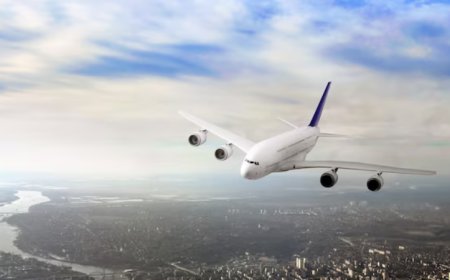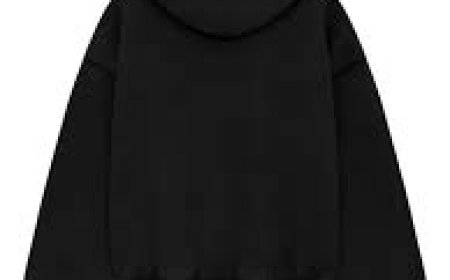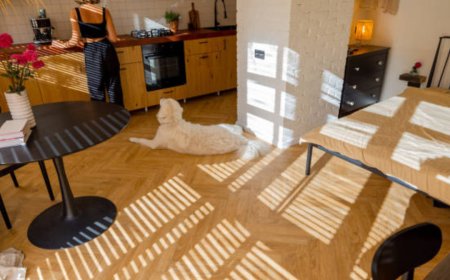Tree Pruning: The Secret to Healthier, Safer, and More Beautiful Trees
Tree pruning isn’t just about looks—it’s about safety, health, and maximizing your tree’s potential. Done right, pruning keeps your trees strong, beautiful, and thriving for years to come. Whether you do it yourself or hire a pro, smart pruning is a win for both you and your landscape.

Ever notice a tree that looks wild and untamed, with limbs sticking out in odd directions or dead branches hanging on for dear life? Thats a tree begging for a good pruning.
What Is Tree Pruning?
Tree pruning is the strategic removal of certain branches to improve the trees structure, health, safety, or appearance. Its like giving your tree a haircutwith purpose.
Why Tree Pruning Matters
Not only does pruning keep your tree looking sharp, but it also prevents hazards, encourages healthy growth, and helps the tree live a longer, more productive life.
Benefits of Tree Pruning
Healthier Trees
Pruning eliminates dead, diseased, or infested branches, allowing the tree to focus its energy on healthy growth.
Enhanced Safety
Overhanging branches near power lines or your roof? Weak limbs over walkways? Pruning minimizes risk before nature forces your hand.
Better Aesthetics
Pruning shapes the tree, making it look more balanced, polished, and attractive. Its like a sculptor refining their work of art.
Increased Sunlight and Airflow
Thinning out crowded areas helps light and air reach the inner canopy and surrounding plants, reducing disease and encouraging undergrowth.
Types of Tree Pruning
Crown Thinning
Selective removal of inner branches to reduce density without altering the trees shape. It improves airflow and reduces wind resistance.
Crown Raising
This method removes lower branches to provide clearance for walkways, vehicles, or buildings.
Crown Reduction
Used to reduce the overall height or spread of a tree. Its ideal for trees that are too close to structures or power lines.
Deadwooding
As the name suggests, this focuses on removing dead or dying limbs that could fall and cause damage or injury.
Pollarding
A more aggressive technique involving the removal of upper branches to promote dense regrowthcommonly used for aesthetics or space control.
When to Prune Trees
Best Time of Year
-
Winter (Dormant Season): Ideal for most speciespruning now promotes vigorous growth in spring.
-
Summer: Useful for slowing growth or removing weak branches.
-
Fall: Generally avoided due to increased risk of disease.
-
Spring: Acceptable for light shaping after flowering.
Pruning by Tree Species
Different species have different preferences. For instance:
-
Maples: Late summer to avoid excessive sap.
-
Fruit trees: Late winter or early spring for productivity.
-
Evergreens: Early spring, just before growth begins.
Signs Your Tree Needs Pruning
Overgrown or Crossing Branches
Branches that rub or cross can damage each other, leading to wounds and decay.
Dead or Diseased Wood
Obvious dead limbs or fungal growth are major red flags.
Low Hanging Limbs
These block paths and obstruct visibility. Raise that crown!
Storm Damage
After a strong storm, damaged or hanging limbs should be pruned promptly to prevent further breakage.
Tree Pruning Tools and Equipment
Hand Pruners and Loppers
For small branches (under 1 inch thick), these are easy and precise.
Pruning Saws
Perfect for medium-sized limbs, especially in tight spaces.
Pole Pruners
Extend your reach without a laddergreat for high branches.
Safety Gear
Gloves, goggles, and sometimes a hard hatyour safety matters as much as the trees.
Tree Pruning Techniques
The 3-Cut Method
To avoid bark tearing:
-
Make an undercut a few inches from the trunk.
-
Make a top cut slightly beyond the undercut to remove the limb.
-
Finish with a clean cut near the trunk (just outside the branch collar).
Proper Angle and Placement
Always cut at a slight angle, just above a bud or branch junction.
Avoiding Over-Pruning
Too much pruning stresses the tree and reduces its energy reserves. The rule? Never remove more than 25% of a trees canopy at once.
Tree Pruning Mistakes to Avoid
Topping Trees
This brutal method chops the top off a tree, leaving weak regrowth and structural instability. Just dont.
Cutting Too Close to the Trunk
Avoid flush cuts. Leave the branch collar intact to promote healing.
Ignoring Timing
Prune at the wrong time and you could invite pests or disease. Always know your trees seasonal cycle.
DIY vs. Hiring a Professional
Small Jobs You Can Handle
If the branch is less than 2 thick and within reachgo for it. Use the right tools and follow safety procedures.
When to Call the Pros
Hire an arborist when:
-
Branches are large or near power lines
-
Tree height requires climbing
-
Youre unsure about what to cut
Cost of Tree Pruning
Factors That Influence Price
-
Tree size and species
-
Accessibility
-
Amount of pruning needed
-
Emergency vs. scheduled
Average Cost by Tree Size
-
Small trees (under 30 ft): $100$300
-
Medium trees (3060 ft): $300$700
-
Large trees (60+ ft): $700$1,500+
Environmental and Long-Term Impact
Promoting Longevity
Regular pruning helps your trees live longer by maintaining structural integrity and preventing disease.
Supporting Wildlife Habitats
Pruning can be done in a way that preserves nests or provides better food and shelter for birds and pollinators.
Tree Pruning and Local Laws
HOA and Municipal Rules
Some neighborhoods or cities have rules about what and when you can prune. Always check before making drastic changes.
Permits and Protected Species
Some trees require permits to pruneespecially in conservation zones or when dealing with protected species.
Conclusion
Tree pruning isnt just about looksits about safety, health, and maximizing your trees potential. Done right, pruning keeps your trees strong, beautiful, and thriving for years to come. Whether you do it yourself or hire a pro, smart pruning is a win for both you and your landscape.
FAQs
1. How often should I prune my trees?
Most trees benefit from pruning every 13 years depending on growth rate and species.
2. Can I prune trees in the summer?
Yes, especially to control growth or remove hazardous limbs. But avoid major cuts in extreme heat.
3. Will pruning hurt my tree?
Not if done correctly! Proper cuts help the tree heal quickly and stay healthy.
4. Whats the difference between pruning and trimming?
Pruning focuses on health and structure. Trimming is mainly for appearance.
5. Is pruning necessary for young trees?
Absolutely. Early pruning shapes the trees future form and prevents structural issues down the road.
Ever notice a tree that looks wild and untamed, with limbs sticking out in odd directions or dead branches hanging on for dear life? Thats a tree begging for a good pruning.
What Is Tree Pruning?
Tree pruning is the strategic removal of certain branches to improve the trees structure, health, safety, or appearance. Its like giving your tree a haircutwith purpose.
Why Tree Pruning Matters
Not only does pruning keep your tree looking sharp, but it also prevents hazards, encourages healthy growth, and helps the tree live a longer, more productive life.
Benefits of Tree Pruning
Healthier Trees
Pruning eliminates dead, diseased, or infested branches, allowing the tree to focus its energy on healthy growth.
Enhanced Safety
Overhanging branches near power lines or your roof? Weak limbs over walkways? Pruning minimizes risk before nature forces your hand.
Better Aesthetics
Pruning shapes the tree, making it look more balanced, polished, and attractive. Its like a sculptor refining their work of art.
Increased Sunlight and Airflow
Thinning out crowded areas helps light and air reach the inner canopy and surrounding plants, reducing disease and encouraging undergrowth.
Types of Tree Pruning
Crown Thinning
Selective removal of inner branches to reduce density without altering the trees shape. It improves airflow and reduces wind resistance.
Crown Raising
This method removes lower branches to provide clearance for walkways, vehicles, or buildings.
Crown Reduction
Used to reduce the overall height or spread of a tree. Its ideal for trees that are too close to structures or power lines.
Deadwooding
As the name suggests, this focuses on removing dead or dying limbs that could fall and cause damage or injury.
Pollarding
A more aggressive technique involving the removal of upper branches to promote dense regrowthcommonly used for aesthetics or space control.
When to Prune Trees
Best Time of Year
-
Winter (Dormant Season): Ideal for most speciespruning now promotes vigorous growth in spring.
-
Summer: Useful for slowing growth or removing weak branches.
-
Fall: Generally avoided due to increased risk of disease.
-
Spring: Acceptable for light shaping after flowering.
Pruning by Tree Species
Different species have different preferences. For instance:
-
Maples: Late summer to avoid excessive sap.
-
Fruit trees: Late winter or early spring for productivity.
-
Evergreens: Early spring, just before growth begins.
Signs Your Tree Needs Pruning
Overgrown or Crossing Branches
Branches that rub or cross can damage each other, leading to wounds and decay.
Dead or Diseased Wood
Obvious dead limbs or fungal growth are major red flags.
Low Hanging Limbs
These block paths and obstruct visibility. Raise that crown!
Storm Damage
After a strong storm, damaged or hanging limbs should be pruned promptly to prevent further breakage.
Tree Pruning Tools and Equipment
Hand Pruners and Loppers
For small branches (under 1 inch thick), these are easy and precise.
Pruning Saws
Perfect for medium-sized limbs, especially in tight spaces.
Pole Pruners
Extend your reach without a laddergreat for high branches.
Safety Gear
Gloves, goggles, and sometimes a hard hatyour safety matters as much as the trees.
Tree Pruning Techniques
The 3-Cut Method
To avoid bark tearing:
-
Make an undercut a few inches from the trunk.
-
Make a top cut slightly beyond the undercut to remove the limb.
-
Finish with a clean cut near the trunk (just outside the branch collar).
Proper Angle and Placement
Always cut at a slight angle, just above a bud or branch junction.
Avoiding Over-Pruning
Too much pruning stresses the tree and reduces its energy reserves. The rule? Never remove more than 25% of a trees canopy at once.
Tree Pruning Mistakes to Avoid
Topping Trees
This brutal method chops the top off a tree, leaving weak regrowth and structural instability. Just dont.
Cutting Too Close to the Trunk
Avoid flush cuts. Leave the branch collar intact to promote healing.
Ignoring Timing
Prune at the wrong time and you could invite pests or disease. Always know your trees seasonal cycle.
DIY vs. Hiring a Professional
Small Jobs You Can Handle
If the branch is less than 2 thick and within reachgo for it. Use the right tools and follow safety procedures.
When to Call the Pros
Hire an arborist when:
-
Branches are large or near power lines
-
Tree height requires climbing
-
Youre unsure about what to cut
Cost of Tree Pruning
Factors That Influence Price
-
Tree size and species
-
Accessibility
-
Amount of pruning needed
-
Emergency vs. scheduled
Average Cost by Tree Size
-
Small trees (under 30 ft): $100$300
-
Medium trees (3060 ft): $300$700
-
Large trees (60+ ft): $700$1,500+
Environmental and Long-Term Impact
Promoting Longevity
Regular pruning helps your trees live longer by maintaining structural integrity and preventing disease.
Supporting Wildlife Habitats
Pruning can be done in a way that preserves nests or provides better food and shelter for birds and pollinators.
Tree Pruning and Local Laws
HOA and Municipal Rules
Some neighborhoods or cities have rules about what and when you can prune. Always check before making drastic changes.
Permits and Protected Species
Some trees require permits to pruneespecially in conservation zones or when dealing with protected species.
Conclusion
Tree pruning isnt just about looksits about safety, health, and maximizing your trees potential. Done right, pruning keeps your trees strong, beautiful, and thriving for years to come. Whether you do it yourself or hire a pro, smart pruning is a win for both you and your landscape.
FAQs
1. How often should I prune my trees?
Most trees benefit from pruning every 13 years depending on growth rate and species.
2. Can I prune trees in the summer?
Yes, especially to control growth or remove hazardous limbs. But avoid major cuts in extreme heat.
3. Will pruning hurt my tree?
Not if done correctly! Proper cuts help the tree heal quickly and stay healthy.
4. Whats the difference between pruning and trimming?
Pruning focuses on health and structure. Trimming is mainly for appearance.
5. Is pruning necessary for young trees?
Absolutely. Early pruning shapes the trees future form and prevents structural issues down the road.
































